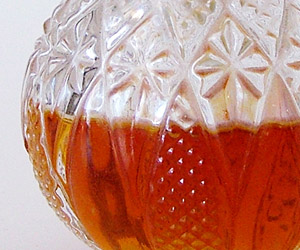Perfume Scent Description
The most practical way to start describing a perfume is according to its Concentration Level, the Fragrance Family it belongs to, and the Notes of the scent, which all affect the overall impression of a perfume from first application to the last lingering hint of scent.
Concentration Levels
Perfume oil is necessarily diluted with a solvent because undiluted oils (natural or synthetic) contain high concentrations of volatile components that may result in allergic reactions and possibly injury when applied directly to skin or clothing. Solvents also vaporize the essential oils, helping to diffuse them into the air. By far the most common solvent for perfume oil dilution is ethanol or a mixture of ethanol and water. Dilutions of the perfume oil can also be produced using solvents such as jojoba, fractionated coconut oil or wax.
Different perfumeries or perfume houses assign different amounts of oils to each of their perfumes. Therefore, although the oil concentration of a perfume in eau de parfum (EDP) dilution will necessarily be higher than the same perfume in eau de toilette (EDT) form within the same range, the actual amounts can vary between perfume houses. The cost of a perfume is directly related to its concentration, with the least diluted being the most expensive formulation of the scent.
The following chart summarizes how the concentration by percent/volume of perfume oil relates to its strength (approximate, in hours) and price range:
| Fragrance Type | Concentration | Strength | Cost Factor |
|---|---|---|---|
| Parfum | 20-40% | 5-7 hrs | $$$$$ |
| Eau de Parfum | 10-20% | 4 hrs | $$$$ |
| Eau de Toilette | 8-10% | 3 hrs | $$$ |
| Eau de Cologne | 3-5% | 1-2 hrs | $$ |
| Eau Fraiche | 3% | 1 hr | $ |
